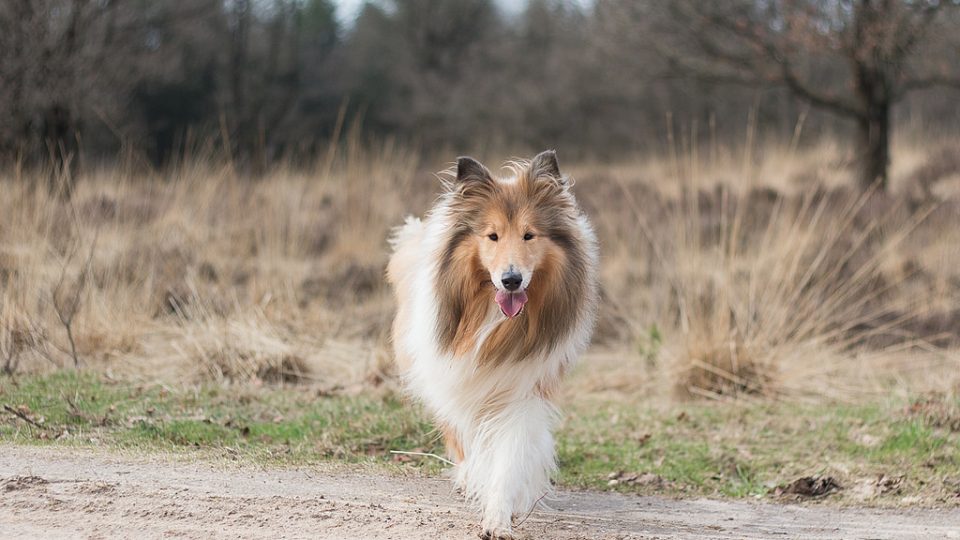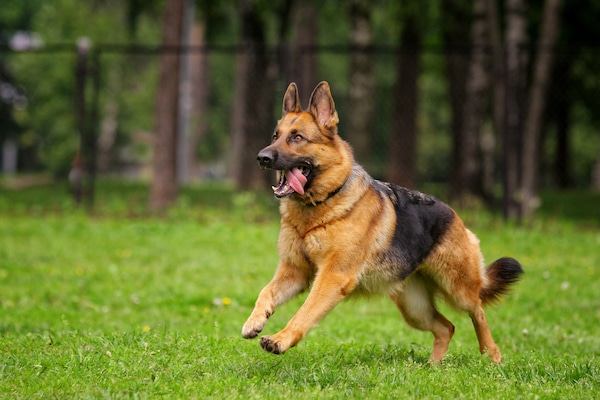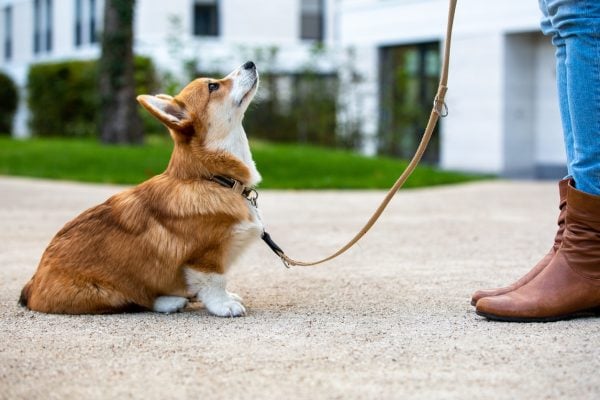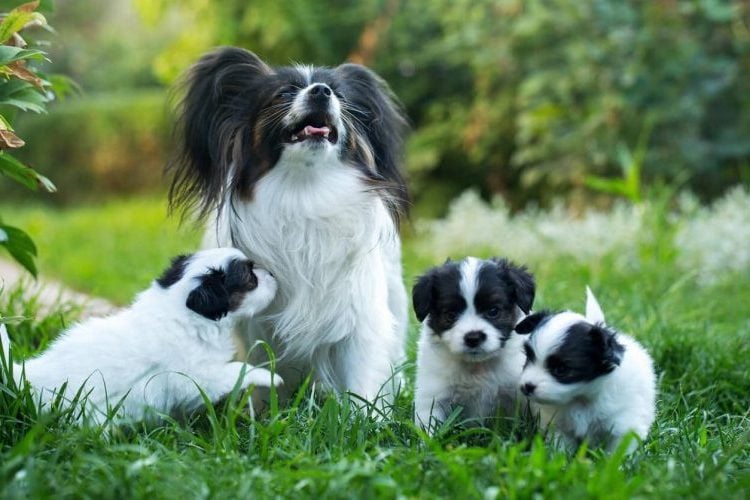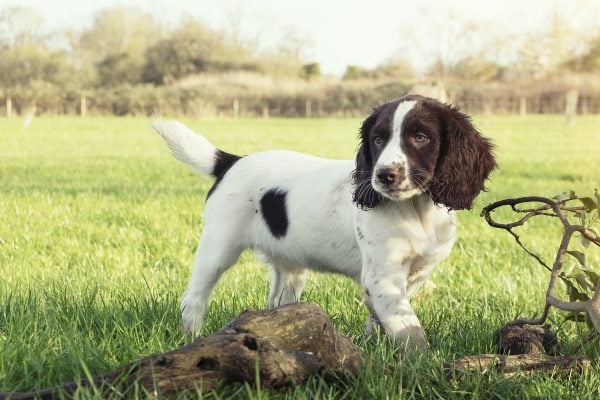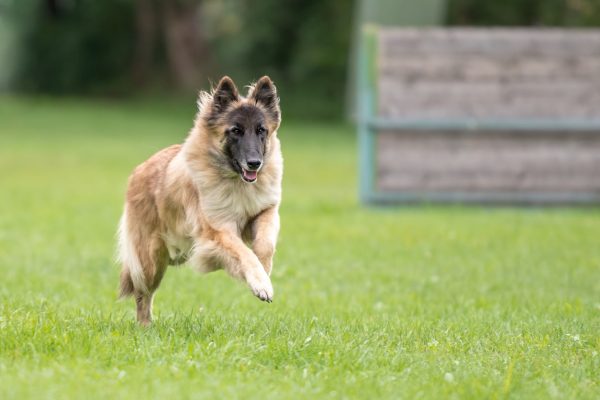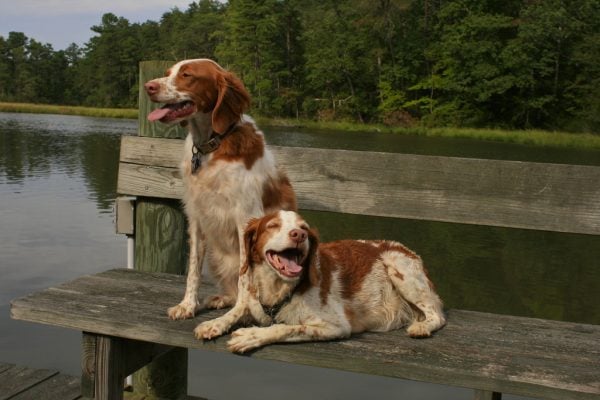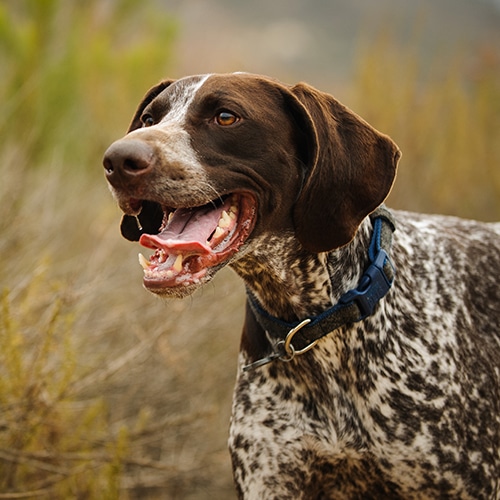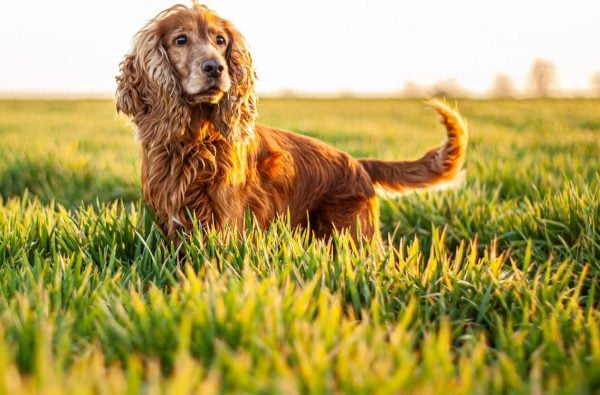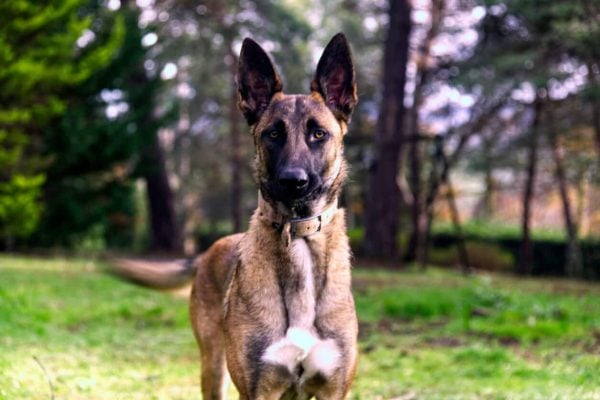- Not a substitute for professional veterinary help.
Dogs are quite intelligent—which you might already know, if you have one at home!
The average dog has mental abilities similar to those of a 2-year-old child, experts say. Dogs can count up to 4 or 5, learn more than 150 words, and deceive people or other dogs for rewards, like treats.
Some dogs, however, can learn over 200 words, unusual tricks, or impressive behaviors. So, what separates the smartest dog breeds from the rest of the pack?
A dog’s smarts depend on a mix of factors, like trainability, problem-solving skills, instincts, and more, says Dr. Paige Adams, veterinarian at Etowah Pet Hospital and Border Collie pet parent.
With these factors in mind, we researched the cleverest dogs and found 21 breeds to highlight. Read on to learn more about the smartest dog breeds and get vet-approved advice for keeping your canine Einstein entertained.
Border Collie
If you want a dog who thinks they’re smarter than you, you can’t go wrong with a Border Collie, Dr. Adams says. They rank first on prominent dog intelligent researcher Stanley Coren’s list of smartest breeds.
This breed’s background of herding sheep makes them attentive and eager to please, with vast memories. One Border Collie named Chaser could remember over 1,000 individual words and even understand simple sentences!
Just be prepared to spend plenty of time exercising their brains and bodies.
Poodle
Underneath a Poodle’s puffy hair lies a powerful brain. Their intelligence makes them one of the most popular dogs to cross in Doodle mixes.
As pets, Poodles are patient yet playful and great with kids and other pets. They come in three sizes: standard, miniature, and toy. All sizes of Poodles need monthly grooms and plenty of brushing to keep their coats healthy.
German Shepherd
German Shepherds were originally bred to keep flocks of sheep safe from danger. Their blend of intelligence, loyalty, trainability, and protective instincts makes them ideal for police work or guide dogs.
They also make devoted pets for active families committed to training and socializing them for success.
Golden Retriever
Don’t let the Golden Retriever’s carefree disposition fool you: These dogs are seriously smart! Originally bred to retrieve ducks and geese for hunters, they have a desire to please that helps them learn complex tasks, making them a favorite breed for service work.
Golden Retrievers generally get along well with kids, cats, other dogs, and just about anyone new they meet. They do great as family pets, but their friendliness means they don’t make great guard dogs.
Doberman Pinscher
The Doberman Pinscher was bred to be a loyal guard dog by German tax collector Karl Dobermann. Modern Dobies still take their jobs seriously, and their intelligence makes them well-suited for police work or guarding.
They can also make excellent family pets, especially for pet parents who want a dog with a low-maintenance coat, according to Nancy Barrett, AKC Doberman Breeder of Merit and owner of Magis Dobermans kennel.
Shetland Sheepdog
The Shetland Sheepdog is a herding breed with Lassie-like good looks, but these dogs are about half the size of a Standard Collie. These clever little dogs boast a strong working drive and many succeed at dog sports, like agility.
Shelties also make sweet, gentle, and good-natured pets for families who prefer a small dog. Just keep in mind their fluffy coats need a lot of upkeep. These vocal dogs also tend to speak their mind!
Labrador Retriever
The Labrador Retriever is one of the most popular family pets for a reason. Their friendly, playful nature means they get along well with kids and other pets, and they have ample intelligence for learning commands and tricks.
They can make an ideal choice for first-time dog parents, but they have abundant energy and can be prone to separation anxiety and fear without regular training and exercise.
Miniature Schnauzer
Schnauzers come in mini, standard, and giant sizes, but the Miniature Schnauzer is especially known for their intelligence and drive as a working breed.
They can make fantastic apartment dogs, as long as. they get enough exercise and attention. They also get along well with kids, but they have a strong prey drive and need socialization at a young age to get along with cats.
Pembroke Welsh Corgi
The Pembroke Welsh Corgi is a small dog with a big spirit. They were originally bred to herd cows by nipping at their heels, and modern Corgis are quick to learn and often excel at dog sports, like agility, scent work, or dock diving.
These dogs also have plenty of attitude, and they can get into mischief without plenty of exercise and attention!
Papillon
Papillons get their name from the French word for “butterfly,” thanks to their unique ears that spread like a butterfly’s wings. This toy breed is still fairly rare in the U.S.
They’re outgoing and spirited dogs love to make their humans laugh, which makes them a great fit for people who want a smart but small companion. Their intelligence and friendly nature also make them excellent therapy dogs.
Rottweiler
Rottweilers may seem goofy, but these dogs are seriously intelligent, highly trainable, and adaptable to a wide variety of tasks, like police work, guarding, herding, and service work.
With the right training and socialization, Rottweilers can do great with kids and other pets. However, their large size, high energy, and independence can make them tough to manage. They do best with experienced pet parents comfortable training large breed dogs.
Australian Cattle Dog
Australian Cattle Dogs were bred to herd (you guessed it) cattle in Australia. These clever dogs have plenty of brainpower and energy, and they make good natural guard dogs and excellent family pets for active families.
Their coats are also fairly low maintenance, perfect for pet parents who don’t want to make monthly trips to the groomer.
English Springer Spaniel
The English Springer Spaniel combines beauty, brains, and plenty of energy. They live to please their people and want to keep you company throughout the day.
They learn new commands quickly but need a fenced yard to run—otherwise, their hunting instincts can kick in and lead them on a cross-country chase!
Belgian Tervuren
The Belgian Tervuren is somewhat rare in the U.S. These sleek dogs may look like long-haired German Shepherds at first glance, but they’re a distinct breed. Their intelligence makes them easy to train, and they thrive in a variety of jobs, like guiding or search and rescue.
As pets, they’re just as happy to put their energy and smarts to work at dog sports. They’re loyal to their humans but somewhat cautious of strangers, making them good family guard dogs.
Belgian Sheepdog
The Belgian Sheepdog, or Belgian Shepherd, is a solid black dog with a fluffy “mane.”
Their intelligence and courage made them reliable and adaptable working dogs during the First and Second World Wars.
Modern Belgian Shepherds have strong intelligence and a high working drive, meaning they need plenty of exercise and mental tasks to keep them busy during the day. They also like to play chase, which might not bode well with a family cat.
Keeshond
The Keeshond may look like a miniature bear, but this gentle, friendly breed loves playing with children. Fearless and smart, they often served as watchdogs on Dutch river barges, earning them the nickname “barge dogs.”
Modern Keeshonds still make highly trainable family watchdogs. They also thrive in dog competitions like agility, obedience, and rally.
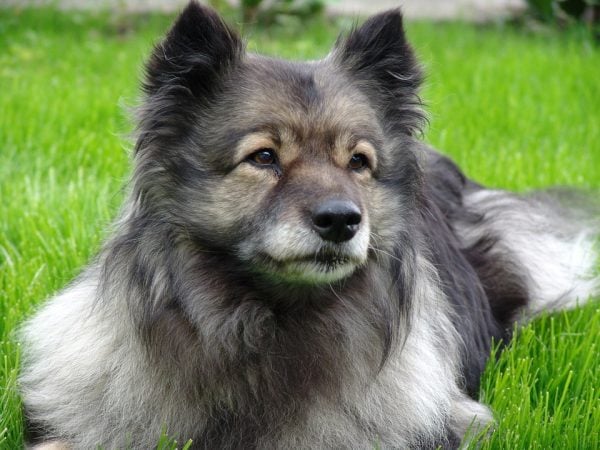
3dman_eu via Pixabay
Brittany
The Brittany is a graceful hunting breed that comes from France, where they worked hunting both furry and feathered creatures.
Modern Brittany dogs make great family companions, due to their trainability and intelligence. But with their strong prey drive and love of the chase, they may not be the best fit for households with cats.
German Shorthaired Pointer
German Shorthaired Pointers get their name from the trademark “pointing” pose they strike when they find game.
This smart European hunting breed still loves going on hunting trips with their humans, but these dogs are also content with hikes or walks around the neighborhood. They make fantastic, intelligent companions for families who want an active pup.
Cocker Spaniel
With their wavy coats and dark doe eyes, Cocker Spaniels are guaranteed to melt your heart. They were originally bred as hunting dogs, but their small size helps them adapt to all kinds of environments.
These dogs also get along well with kids and other pets, so they make a great choice for first-time dog parents who want an easy-to-train companion.
Australian Shepherd
The Australian Shepherd is a hardworking breed. They love to learn new tricks and commands and thrive in dog sports, hiking with their humans, or playing in the backyard.
However, their intelligence and energy levels can be a disastrous combination when they don’t get enough attention. So, they need an active family willing to include them in their adventures.
Belgian Malinois
Belgian Malinois are true “velcro dogs” who want to spend all day with their families, explains Karen Shivers, AKC Belgian Malinois breeder of Merit and owner of StoneFox Kennel. They’re incredibly smart learners and thrive in police and military work.
Some Belgian Malinois with a less intense working drive can be content as pets. But Shivers cautions that these dogs tend to do whatever they want without proper training.
They also like to play rough, which makes them better suited for families with older kids or teens.
How Do Researchers Test Canine Intelligence?
There isn’t any universal “dog IQ test” to measure a dog’s intelligence.
Dr. Adams explains that many researchers have devised tests for factors that can help determine the intelligence of a breed or an individual dog. These factors include:
- Trainability: This measures how easily a dog can learn new commands or behaviors, from new tricks to alerting for seizures.
- Problem-solving skills: This tests a dog’s ability to solve a specific puzzle or challenge, like finding hidden food.
- Adaptive intelligence: This test measures how well a dog can learn from experience or observation. For example, they may learn which cabinet treats come from and suddenly appear at your side whenever you open it.
- Instinctive intelligence: These tests consider a dog’s genetic predisposition for certain behaviors, like barking to alert, retrieving, or herding animals.
- Social intelligence: This test assesses how well a dog can pick up body language or emotional cues from people. For instance, they may pick up on your sadness and offer extra kisses and cuddles.
Most smart breeds have a combination of these intelligence types, although some may score higher in one area than others.
Dr. Adams explains, for example, that many intelligent breeds have a will to please and will be highly obedient, but more independently minded dogs may understand they don’t always have to follow orders.
Some dogs with high intelligence have more stubborn dispositions and may be less open to training, for example.
Check how your dog compares with a dog intelligence test you can do at home!
Keeping Your Smart Dog Entertained
Activities that make your smart dog use their brain power will satisfy them more than purely physical activities, Dr. Adams explains. She suggests trying dog sports to give your dog something more stimulating than regular play, like dock diving for a water breed, or agility for a herding dog.
Smart dogs can also get their mental workouts at home through stimulating activities like snuffle mats or daily training sessions.
“Keep training sessions short, creative, and fun,” Dr. Adams says, adding that she aims for 5-10 minutes per session. “Always end your play or training session with the dog wanting more!”
You can start your smart cookie off on the right paw with our guide to positive reinforcement training.
